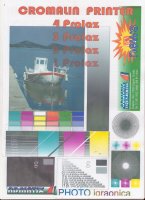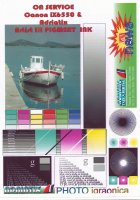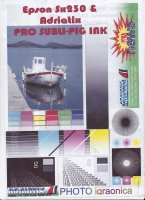- Joined
- Dec 27, 2014
- Messages
- 6,336
- Reaction score
- 7,548
- Points
- 373
- Location
- Germany
- Printer Model
- L805, WF2010, ET8550, T3100X
I must admit I cannot follow your explanations,
I'm not sure about the meaning of 'color fidelity', are you talking about the gamut, the color space which can be acheived with a particular printer, with dye or pigment inks ? I can confirm that I can acheive about the same color saturation with pigment inks as with dye inks, but it should be clear that not every printer would reach that maximum. So yes, some dye ink printers can do better than some pigment ink printers. I'm not talking here about other issues with pigment inks like gloss differences.
Which printers are you talking about ? All higher end photo printers by Canon or Epson like the P800, P5000 by Epson or the series of Prograph 1000 and higher by Canon are all high level printers with pigment inks. They are not identical, they employ a different number of inks, but all create high level print output, there are no dye ink printers in this range.That is true but pigment ink can not match some photo printer with a dye ink in color fidelity.
I'm not sure about the meaning of 'color fidelity', are you talking about the gamut, the color space which can be acheived with a particular printer, with dye or pigment inks ? I can confirm that I can acheive about the same color saturation with pigment inks as with dye inks, but it should be clear that not every printer would reach that maximum. So yes, some dye ink printers can do better than some pigment ink printers. I'm not talking here about other issues with pigment inks like gloss differences.
Epson is doing exactly that since a long time with millions of printers, printers at the lower price range , with a printhead 180 nozzles black and 3x59 nozzles fo CMY, this printhead is used in lots of WF Workforce models for home office applications with Durabrite pigment inks, and the same printhead runs in million of printers in XP 'Expression home models with dye inks, not to mention ET.. and L... series ink tank printers. I'm using both pigment or dye inks in a L310 and L382 at this time, without complications, both modes produce good color output.Also you can not replace dye ink printer with pigment ink since dye ink printer
There are plenty enough locations for ink dots to be placed side by side in a pixel, the geometric print resolution is a max of 720 dpi, and the printer is doing a max of 2880x5760 dpi within a dot to render the color, that is a matrix of 4x8 (4x720=2880 and 8x720=5760) 32 locations, - plenty enough to render any dolor with CMY, inks will run partially into each other from dot gain, and these colors will mix , they are still wet directly after printing. And don't forget that Epson can print different drop sizes with each nozzle, and Canon uses several nozzle rows for different drop sizes.dye ink printer is stacking color dots for right tone




